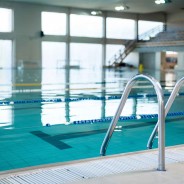In another case of Legionella affecting healthcare premises, Florida Hospital in Orlando was recently prompted to arrange a full chlorine-based flush of its water system, in response to signs of contamination.
As reported by Fox 35, a critically-ill patient tested positive for legionella in November, sparking water tests to be carried out at the facility –the results of which confirmed the bacteria to be present. Although further testing revealed that the strain of legionella found in the patient differed from that found in the hospital’s water, it was vital that the facility disinfected its water system with immediate effect to prevent a Legionnaire’s outbreak.
Water chlorination is arguably the most popular method for disinfecting mains-connected water supplies that are showing signs of contamination. The process is highly effective at removing bacteria and viruses, and is also relatively inexpensive.
What happens during the water chlorination process?
Chlorination of a water system is fairly straight forward and usually completed within a 1 hour kill time. During the treatment process, engineers will add sodium hypochlorite solution (chlorine) to the system –either via an injection point on the cold water mains or by dosing the cold water tank. The chlorine is then pulled through to all corresponding hot and cold outlets, before the system is shut down.
During the 60 minute down-time, engineers will monitor chlorine levels to ensure that a 50ppm -30 ppm dosage is maintained.
My water system isn’t showing signs of contamination –do I still need chlorination?
In cases such as Florida Hospital, chlorination is used as a rapid response to legionella detection. However, chlorination is often required as a precautionary measure. As stipulated within the Approved Code of Practice L8, there are certain circumstances under which a building’s water system should be subjected to disinfection through chlorination. For example, in cases of new installations or refurbishment of a hot and cold water system, chlorination treatment should be carried out to ensure the water quality has not been compromised. Other situations in which precautionary disinfection is strongly recommended include:
- On installation of new components;
- Where the hot and cold water is not used for a prolonged period;
- On routine inspection of water storage tanks, where there is evidence of stagnation;
- If the system or part of it has been substantially altered or entered for maintenance purposes, which may introduce contamination.
- Samples of water indicate disinfection is required
For more information on Brodex’s chlorination services visit our page here, or contact our team of water treatment experts.






